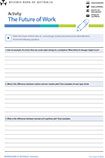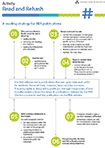Reading and Interpreting Charts
This module contains a collection of resources for teachers to help students develop their ability to read and interpret a range of charts.
Videos
NEW
Summary of Current Economic Conditions
Current economic conditions in Australia as at 18 February 2025, featuring Jacob Harris.
Summary of Current Economic Conditions
Current economic conditions in Australia as at 30 October 2024, featuring Geneve Bullo.
Welcome from the Deputy Governor
Deputy Governor Andrew Hauser welcomes attendees to the Reserve Bank of Australia’s 2024 Teacher Immersion Event.
An Economic Update
Hear an update on economic conditions from Assistant Governor (Economic) Sarah Hunter at our annual Teacher Immersion Event.
The Labour Market and Full Employment
Senior Economist (Economic Analysis) Alex Ballantyne discusses trends in Australia’s labour market and full employment at our 2024 Teacher Immersion Event.
Economic Growth: From the Bank
Senior Manager (Economic Analysis) Kate McLoughlin discusses developments in economic growth at our 2024 Teacher Immersion Event.
Economic Growth: From the Classroom
Teacher Timmee Grinham goes through some practical strategies for teaching about economic growth in the classroom at our 2024 Teacher Immersion Event.
Exchange Rates: From the Bank
Manager (International) Jess Young discusses exchange rates, including the factors driving movements in the Australian dollar, at our 2024 Teacher Immersion Event.
Exchange Rates: From the Classroom
Teacher Matt Dalziel goes through some practical strategies for teaching about exchange rates in the classroom at our 2024 Teacher Immersion Event.
Recent Trends in Inflation
Senior Manager (Economic Analysis) Kevin Lane discusses recent trends in inflation, as well as the differences between headline and underlying inflation, at our 2024 Teacher Immersion Event.
Monetary Policy Implementation
Managers Gigi Lovicu and Ben Jackman (Domestic Markets) walk through how the Reserve Bank of Australia implements Monetary Policy at our annual Teacher Immersion Event.
Closing Remarks by the Governor
Governor Michele Bullock gives her closing remarks at the Reserve Bank of Australia’s 2024 Teacher Immersion Event.
Summary of Current Economic Conditions
Current economic conditions in Australia as at 31 July 2024, featuring Joanna Bleakley.
Summary of Current Economic Conditions
Current economic conditions in Australia as at 1 May 2024, featuring Emma Chow.
Summary of Current Economic Conditions
Current economic conditions in Australia as at 31 January 2024, featuring Tim Atkin.
Summary of Current Economic Conditions
Current economic conditions in Australia as at 10 November 2023, featuring Alex Symonds.
Bringing the Aggregate Demand Equation to Life
The aggregate demand equation is an important tool to understand the economy, but is also an excellent example of how classroom content is applied in the real world. In this video, RBA economists explain the equation, talk about their work as economists and showcase the opportunities of a career in economics.
Student Webinar: Economic Update – as at 13 September 2023
A summary of monetary policy and current economic conditions as at September 2023 – a Webinar for Year 11 and 12 students featuring Joanna Bleakley and Bradley Jones.
Summary of Current Economic Conditions
Current economic conditions in Australia as at 4 August 2023, featuring Alex Symonds.
Ask an Economist: Why is economics relevant to young people today?
Young economists share their ideas about why economics is relevant for young people and how the skills it builds can lead to a range of careers.
Ask an Economist: What jobs can you do if you study economics?
Public policy? Tech firms? Climate change? Young economists share the broad range of fields and careers you can pursue if you study economics.
Ask an Economist: What's the best thing about a career in economics?
Young economists share what they love most about economics, including the teamwork, staying on top of what is happening in the world and the chance to help people by tackling real-world problems.
Ask an Economist: What's one project you've enjoyed working on as an economist?
Career economists talk about some of their fascinating projects, ranging from researching how global institutions gave financial support to low-income countries during the pandemic to reporting on housing affordability to finding ways to better forecast the future.
Ask an Economist: What's your advice to someone interested in studying economics?
Young economists share their advice for high school students who are considering studying economics, from thinking critically to following the news to seeing how economics relates to other study areas.
Ask an Economist: If economics was an Olympic sport, what would it be?
Young economists help to explain economics through a light-hearted take on which Olympic sport economics is most similar to. Which would you choose?
Welcome
Hear opening remarks from Deputy Governor Michele Bullock.
An Economic Update – Teacher Immersion Event 2023
Hear an update on economic conditions from Assistant Governor Luci Ellis.
The Transmission of Monetary Policy
Learn about the different channels through which changes in monetary policy affect economic activity and inflation in Australia.
Productivity: From the Bank
Learn about the concept of productivity, its links to economic growth and inflation, and recent productivity outcomes in Australia.
Productivity: From the Classroom
Gain insights on practical methods for teaching about productivity in the classroom.
Developments in Australia's trade and financial flows: From the Bank
Learn about the balance of payments and recent developments in Australia's trade and financial flows.
Teaching Balance of Payments in the Classroom
Gain insights on practical methods for teaching about the balance of payments in the classroom.
Inflation, Costs and Profits
Learn about recent inflation outcomes and the drivers of those outcomes, including developments in firms' costs and profits, and supply and demand.
Promoting economic literacy with new teacher resources from the RBA
Learn about the concept and importance of economic literacy, as well as the RBA's latest teacher resources being developed to support economic literacy.
Closing Remarks
Hear closing remarks from Governor Philip Lowe
Summary of Current Economic Conditions
Current economic conditions in Australia as at 4 May 2023, featuring Stefano Tornielli di Crestvolant.
Summary of Current Economic Conditions
Current economic conditions in Australia as at 9 February 2023, featuring Tim Atkin.
Summary of Current Economic Conditions
Current economic conditions in Australia as at 4 November 2022, featuring Madeleine McCowage.
Student Webinar: Economic Update – as at 13 September 2022
A summary of monetary policy and current economic conditions as at September 2022 – a Webinar for Year 11 and 12 students featuring John Boulter and Luci Ellis.
Summary of Current Economic Conditions
Current economic conditions in Australia as at 5 August 2022, featuring Yasaman Naghiloo.
Welcome
Hear opening remarks from Deputy Governor Michele Bullock.
An Economic Update – Teacher Immersion Event 2022
Hear an update on economic conditions from Assistant Governor Luci Ellis.
Implementing Monetary Policy
Learn about the objectives, tools and implementation of monetary policy.
Inflation: From the Bank
Learn about the measurement of inflation and its drivers.
Inflation: From the Classroom
Gain insights on practical methods for teaching about inflation in the classroom.
Unemployment and Underemployment: From the Bank
Learn about recent developments in unemployment and underemployment including the initial shock and recovery from the pandemic.
Unemployment and Underemployment: From the Classroom
Gain insights on practical methods for teaching about unemployment and underemployment in the classroom.
Inflation, Wages and the Labour Market
Learn about the interactions between inflation and the labour market looking at both recent developments and historical experience.
Global Economic Conditions
Learn about conditions in the global economy.
Closing remarks
Hear closing remarks from Governor Philip Lowe.
Summary of Current Economic Conditions
Current economic conditions in Australia as at 6 May 2022, featuring Kimia Ghomashchi.
Explore Economics: Claire's Story
RBA economist, Claire Johnson, shares her study and career path, and what she loves about economics.
Explore Economics: Philipp's Story
RBA economist, Philipp Grozinger, shares his study and career path, and what he loves about economics.
Explore Economics: Lea's Story
RBA economist, Lea Jurkovic, shares her study and career path, and what she loves about economics.
Explore Economics: Samuel's Story
RBA economist, Samuel Kurian, shares his study and career path, and what he loves about economics.
Explore Economics: What key economics concepts do you use in your daily life?
Four RBA economists discuss some of the economics concepts they find interesting and useful.
Explore Economics: How has the pandemic affected your work as an economist?
Four RBA economists reflect on some of the ways the economic effects of COVID-19 has affected their work.
Summary of Current Economic Conditions
Current economic conditions in Australia as at 4 February 2022, featuring Nalini Agarwal
Introduction – Teacher Immersion Event 2021
Hear opening remarks from Governor Phil Lowe, given at the RBA’s online Teacher Immersion Event 2021
An Economic Update – Teacher Immersion Event 2021
Hear an update on economic conditions from Head of Economic Analysis Bradley Jones
Unconventional Monetary Policy
Learn about how monetary policy has responded to support the economy through the pandemic – professional development featuring Andrea Brischetto
Understanding the NAIRU – From the Bank
Learn more about the concept of the non-accelerating inflation rate of unemployment, and its importance – professional development featuring James Bishop
Understanding the NAIRU – From the Classroom
Gain insights on practical methods for teaching about the NAIRU in the classroom – professional development from a member of the Bank's Educators Advisory Panel
Download the presentation 7.7MBClimate Change and Central Banking
Learn about how and why central banks around the world are investigating climate change – professional development featuring Alex Heath
Closing remarks – Teacher Immersion Event 2021
Hear closing remarks from Chief Economist Luci Ellis, given at the RBA’s online Teacher Immersion Event 2021
Summary of Current Economic Conditions
Current economic conditions in Australia as at 4 November 2021, featuring Joyce Tan
Introduction to Economics
An introduction to economics, the economy and its sectors, inflation and the role of the RBA – a webinar for Year 9 and 10 students delivered in February 2021, featuring Tanya Livermore
Student Webinar: Economic Update – as at 14 September 2021
A summary of monetary policy and current economic conditions as at September 2021 – a Webinar for Year 11 and 12 students featuring Rachael Fitzpatrick and Luci Ellis
Determinants of the Australian Dollar over Recent Years
This talk discusses some of the factors that have driven the Australian dollar over recent years – a Topical Talk featuring Tim Atkin and Isabel Hartstein
Summary of Current Economic Conditions
Current economic conditions in Australia as at 5 August 2021, featuring Matthew Larkin
Summary of Current Economic Conditions
Current economic conditions in Australia as at 7 May 2021, featuring Rachael Fitzpatrick
The Economic Effects of COVID-19 and the Recovery
This talk focuses on the economic effects of COVID-19 on the Australian economy and how the economy has recovered – a Topical Talk featuring Bradley Jones
Introduction to Monetary Policy
A Video Explainer introducing key concepts related to monetary policy
Objectives of Monetary Policy
A Video Explainer discussing the objectives of monetary policy
Interest Rates: Introduction
A Video Explainer discussing key concepts related to interest rates
Conventional Monetary Policy Tools: the Cash Rate Target
A Video Explainer discussing the RBA’s cash rate target
Interest Rates: Short- and Longer-term
A Video Explainer exploring concepts related to short- and longer-term interest rates
Unconventional Monetary Policy Tools: Part 1
A Video Explainer discussing unconventional monetary policy tools (forward guidance and asset purchases)
Unconventional Monetary Policy Tools: Part 2
A Video Explainer discussing unconventional monetary policy tools (Term Funding Facility and adjusted market operations)
Monetary Policy Transmission: Four Channels
A Video Explainer discussing the four channels of transmission from interest rates to aggregate demand and gross domestic product (GDP)
Asset Prices and Interest Rates
A Video Explainer discussing asset prices and how they are affected by interest rates
Monetary Policy Transmission: Economic Activity, Employment and Inflation
A Video Explainer discussing how monetary policy affects different indicators of economic performance and some important ideas related to transmission
Australia's Inflation Target
A Video Explainer discussing the Reserve Bank's flexible inflation targeting framework
Introduction to the Australian Dollar Exchange Rate
A Video Explainer introducing concepts related to the exchange rate
Exchange Rates and the Australian Economy
A Video Explainer discussing how changes in the exchange rate affect the economy
Drivers of the Australian Dollar Exchange Rate
A Video Explainer discussing what factors drive changes in the value of the Australian Dollar
Summary of Current Economic Conditions
Current economic conditions in Australia as at 5 February 2021, featuring Tomas Cokis
Bonds and the Yield Curve
A Video Explainer introducing key concepts related to bonds, the bond market and the yield curve
Reading and Interpreting Charts – Introduction
A Video Explainer introducing students to the main components of a chart
Reading and Interpreting Charts – Examples
A Video Explainer exploring charts from the monthly Reserve Bank Chart Pack
Summary of Current Economic Conditions
Current economic conditions in Australia as at 5 November 2020, featuring Gigi Lovicu
Monetary Policy and Current Economic Conditions
A summary of monetary policy and current economic conditions as at October 2020 – a Webinar for Year 11 and 12 students featuring David Lancaster
Introduction to Inflation
A Video Explainer introducing key concepts related to inflation
Calculating Inflation
A Video Explainer outlining the calculation of inflation and related issues
Measures of Inflation
A Video Explainer exploring the concepts of headline and underlying inflation
Monetary Policy in 2020
The effect of COVID-19 on the Australian economy and the RBA's response to it as at August 2020 – a Topical Talk featuring Andrea Brischetto
Summary of Current Economic Conditions
Current economic conditions in Australia as at 7 August 2020, featuring Natasha Cassidy
The Expenditure Multiplier
A Video Explainer exploring concepts and issues related to the simple expenditure multiplier
Aggregate Demand and Aggregate Supply
A Video Explainer exploring concepts and issues related to aggregate demand, aggregate supply and the business cycle
Recent Developments in the Labour Market
The effect of COVID-19 on the Australian labour market as at May 2020 – a Topical Talk featuring Natasha Cassidy
Current Economic Conditions – Household Spending (Consumption)
Current economic conditions in Australia focusing on household spending (consumption) as at 8 July 2020, featuring Tom Rosewall
Gross Domestic Product (GDP)
A Video Explainer exploring concepts and issues related to Gross Domestic Product (GDP)
Measuring Economic Variables (Nominal v Real)
A Video Explainer exploring concepts related to the measurement of economic variables
The Labour Market and Unemployment
A Video Explainer exploring concepts and issues related to the labour market and unemployment
Summary of Current Economic Conditions
Current economic conditions in Australia as at 7 May 2020, featuring Mark Chambers
What does the RBA do?
A helpful overview of the role of the Reserve Bank of Australia
Transcript
The Reserve Bank is Australia's central bank.
We aren't like a commercial bank, in that we don't provide bank accounts or loans to the public.
We set the official interest rate for Australia, which is called the cash rate. This rate directly influences the interest rates on savings and loans; it ensures that prices for goods and services don't rise too quickly.
At the Reserve Bank, we know how important this decision is so we look at the economy in detail.
We also keep a close eye on Australia's financial system, ensuring that it's healthy and stable so that your money is safe.
We ensure that the payment systems you use are secure and working efficiently.
We make and distribute Australia's banknotes. Our banknotes' cutting-edge security features make them some of the most secure in the world, with more than $74 billion worth of banknotes in circulation.
We are the banker for the government. For example, when you visit the doctor and receive a Medicare rebate, we process the payment for the government. Every year we process over 300 million payments on behalf of government agencies.
We do all of these things to help protect and support the economic welfare of all Australians.
Learn more at www.rba.gov.au/education.
Explore Economics Webinar
Recording of the RBA webinar in which young economists discuss their role, career path, and the benefits of studying economics
The Future of Work
The changing nature of the Australian workforce and the skills that are likely to be valued in the future, featuring Alex Heath
Transcript
Alex Heath, Head, Economic Analysis Department
The Australian workplace is changing. Many of the jobs that are around today didn't exist a decade ago, and the same will be true in decades to come.
In such a rapidly changing environment, how can workers make sure they have the right skills to succeed? Before we answer that question, let's have a look at some of the factors driving changes in the workplace today.
Factors like demographic change tend to work slowly over decades, rather than years. Australia's population is getting older, and because of that, we're seeing increased demand for nursing and aged care.
Factors like technological change can be quite fast and be quite disruptive, and not only to individual jobs, but to entire industries. Robotics enables production lines to be automated, while spreadsheets and other sorts of IT allow office processes to be automated.
Some jobs will be replaced, but technology can also create increased demand for new skills. There's now demand for occupations like IT security, data analytics, that just didn't exist 20 years ago.
So, to help think about what skills might be demanded in the future, it's useful to look at what people are doing in the economy today, and how that's changed over time. Let's start with routine jobs.
As the name suggests, routine jobs are more repetitive. A simple example of this is production line work. Data processing and office administration are also considered to be routine jobs. On the other hand, non-routine jobs require more human interaction and judgement because people in these jobs face different situations every day.
Most jobs in the health care and social assistance sector are non-routine, and there has been strong employment growth in this sector over the past 15 years or so. Most professional jobs, such as those in architecture or engineering, as well as jobs in education are also in non-routine categories.
It's also useful to understand whether jobs are manual or cognitive. Manual occupations tend to rely on physical labour and are often in industries like construction, manufacturing or mining.
Workers in cognitive jobs are likely to have post-school qualifications and use their expertise and knowledge to get the job done. So, think of lawyers, doctors and economists. So, now we know a little bit more about the different types of jobs that exist today, how has their importance changed over time?
When you look at the data, over the past 10 years there's been relatively little growth in the number of routine jobs compared with non-routine jobs. This is probably not surprising because these are the jobs that are going to be most easily automated.
Interestingly, we've also seen relatively little growth in cognitive jobs that are routine in nature. Jobs like data entry and bookkeeping are being replaced with new technical solutions, or another possibility is that they're being moved offshore where labour is cheaper.
But in contrast, we've seen quite strong growth in non-routine jobs. And it's here that we see the most potential for the future. They typically require university qualifications and they require people to have a greater range of skills that are harder to automate, such as social intelligence and creativity.
So, while we don't know what roles will be demanded in the future, the data allow us to predict some of the skills that are going to be quite highly valued. Some things like learning how to learn, problem solving skills, and having core skills in maths and sciences are going to help employees adapt to future changes in technology.
And don't forget, there's going to be a whole range of new jobs that we don't even have a title for yet. As an economist at the Reserve Bank, I rely on a range of skills every day. Some of these skills come from what I learned at university. Other skills I've learned on the job.
In particular, I use detailed analysis of complex, and often ambiguous, information to help form a better understanding of how the economy works and what the workforce looks like. I'm constantly asking questions and trying to solve puzzles presented by the data so that I can provide better advice.
I also use social skills to communicate my views and contribute to better policy. These skills are also core to my role as the head of a department with a staff of almost 80 people. These types of skills are not easily replicated by computers or replaced by offshore resources, and they're going to be helpful for facing the changes that lie ahead.
At the Reserve Bank of Australia, we're committed to using research to shape better policy. And a part of this is helping people understand the changing nature of the economy and the changing nature of the Australian workforce so they can equip themselves with the right skills.
Having a workforce that has the right skills should underpin productivity growth and therefore, the economic prosperity of the Australian people into the future.
The Global Financial Crisis
A discussion of lessons and questions that arose from the Global Financial Crisis, featuring Guy Debelle
Transcript
Guy Debelle, Deputy Governor
It's just over 10 years since the date that most people associate with the GFC, namely the 15 September 2008, which was the day that Lehman brothers filed for bankruptcy. And there have been quite a number of articles written in the past few months, looking back at that time and the period leading up to it. And for me, it's interesting to read the different perspectives on the same set of events, especially those that recount events that I had a ringside seat at or was even in the ring itself.
And it's a bit like the standard line about the 60s that those who can remember the GFC probably weren't there. So the sleep-deprived haze that was pervasive at the time affects the memory; it certainly affects my memory. And critical decisions were made under extreme duress and fatigue, particularly in the US which, by and large, stack up well with the passage of time.
So a lot of my counterparts were making these really important decisions with almost no sleep for quite a long period of time. And I think, by and large, those decisions look good, even with the benefit of hindsight.
So what I'm going to do today is not give another detailed account of what happened. Instead, I will talk about some of the events. But the main thing I intend to do is talk about some of the lessons learned and relearned from the crisis. And this list of lessons is by no means comprehensive. And I’ll also discuss some questions that arose from the crisis that remain unresolved, at least in my mind.
Now, questions which I think should be a focus of the economics profession – answering them will help guide policy makers, should they be faced with similar situations to the ones we confronted in 2008. And the key lesson that comes from the crisis that I'll highlight today is that leverage really matters. Leverage significantly magnifies the effect of any shock that hits the economy. And leverage might not start the fire, but it will pour petrol on a burning platform.
But, at the same time, you need to keep the credit flowing to prevent the economy from seizing up. This is where we're going to go over the course of the talk. So I focused on five different areas, each one gets its own song title, relevant to the area. And so we're going to start with the Ballad of a Thin Man from Mr Bob Dylan.
So those of you who know the song, the most famous line in the song, which was one of Dylan's more famous lines is, ‘something is happening here but you don't know what it is, do you, Mr Jones?’ So that's Bob Dylan's version of the question that Queen Elizabeth posed, which was to a room full of economists which is, ‘Why didn't anyone see this coming?’
So, there were those who saw the storm clouds on the horizon of what became the financial crisis. Michael Lewis wrote a whole book, which did very well, about some of them and there was even a movie made out of it. The Big Short was very much about some of the people who saw aspects of this coming. Though often the storm didn't quite take the form that those people who saw it coming were expecting, including people in Lewis' book.
Very few appreciated the extent of the financial interconnectedness and what it implied. To give one example, one common prediction ahead of the crisis was that it would be a US Dollar crisis with consequent calamity but in the end, when the crisis actually took hold, the US Dollar appreciated through the crisis rather than plummet as a lot of people had predicted. Well, those people who had seen it predicted.
Looking back on how financial markets reacted through 2007, the onset of the crisis is often dated from when BNP shut three funds with subprime mortgage exposure on the 9th of August 2007. That caused a short-lived wobble in equity markets. But after that, it was onwards and upwards for much of the rest of 2007 with the equity market actually peaking in November 2007.
And the equity market was the lens through which the public saw the events unfold. So, by that metric, 2007 was actually pretty benign. Macroeconomists generally looked at what was unfolding in the US housing market and expected that its spillover to the rest of the economy would be contained. The slowdown would be mild and to an extent welcome in containing the inflation reproaches that had been building.
But the fixed income market took fright in August 2007 and got more and more scared throughout the rest of that year. Uncertainty increased about the quality and value of asset-backed securities and the assets that underpinned them.
There was further uncertainty about whose book those assets resided on, generating a marked rise in counterparty risk aversion amongst financial institutions; that is banks and financial institutions became less willing to lend to each other, both because of concerns about the financial strength of the counterparty as well as a desire to hoard any available liquidity they have, should they themselves need it.
So the summary indicator that was generally used to look at this is this [graph] in terms of the tension in fixed income markets is the LIBOR OIS spread. There's a difference between LIBOR and OIS, which is the expected policy rate, or the equivalent here in Australia, which is the BVSW OIS spread. So the spread between the rate that banks borrow at and the expected policy rate.
So as that gets wider, so as the line goes up, that is an indicator of increased tension in financial markets. And that actually summarises the unfolding of the crisis pretty well. So, these tensions continued to increase with a rolling series of flareups, including notably the rescue of Bear Stearns by JP Morgan in March 2008. And by that stage, these concerns were becoming increasingly reflected in equity markets, too.
GDP growth in a number of economies started to slow but it wasn't until the fourth quarter of 2008 when the economic forces really took hold with a vengeance. Lehman's filed on the Monday morning of September 15th, Australian time. And it is interesting to look back at that actual date. The actual date was actually a pretty calm one in financial markets. So Lehman's wasn't the turning point. The actual zenith of the crisis was still to come in the following weeks.
AIG, which was the poster child of financial connectedness, was rescued. TARP was rejected by the US Congress and then subsequently passed after all hell broke out in financial markets. The Prime Mutual fund reserve broke the buck; Washington Mutual failed. All of that happened after Lehman's filed for bankruptcy.
So markets were driven by fear with huge swings in prices. Many of these swings occurred late in the New York trading day which is early in the Australian trading day. And the correlation between the Australian Dollar and the US equity markets through those periods was indicative of the extremely high degree of co-movement across all markets. So, markets regularly recorded, to quote, 25 standard deviation events in the words of then Goldman CFO David Viniar.
So to give you some perspective, 25 standard deviation events are only supposed to be happening once in the lifetime of the universe which says something about the risk models that people were using at the time. My recollection of the worst of it was in the early hours of Saturday morning, the 11th of October Australian time after which we, the RBA, had been intervening in the foreign exchange market through the Friday evening to provide liquidity into an almost completely illiquid FX market.
So talking on the phone to the RBA desk in New York, they reported that US treasuries, the most liquid market in the world, had effectively seized up then. So it's worth recounting this, just to recall how dislocative and disruptive these developments were. It was really not clear how this was going to end then, except badly.
And the fourth quarter of 2008 was just straight out bad. The global GDP declined by 1.5 per cent. So I've got here a graph of GDP in levels terms, not in growth rates, but in levels for US, the Euro area and ourselves. So global GDP declined by 1.5 per cent in that last quarter of 2008. That's not annualised, that's actually what the decline was.
GDP in the US fell by 2.25 per cent. In Australia, GDP contracted by 0.5 per cent. And the impact was particularly severe in global trade which collapsed as trade finance dried up because of extreme counterparty risk aversion. If you're not sure you're going to get paid, you don't lend money to anyone.
So that's the collapse in global trade in the last quarter of 2008. Companies and banks were unwilling to accept the guarantee of another bank that underpinned the trade lines of credit; they had little confidence that they were going to get paid.
So the breadth and depth of the impact was remarkable. Output fell by more in the Great Depression but the Great Depression was not as synchronised nor as widespread as this was at the end of 2008. And these macroeconomic and financial developments very much underpin the nature of the global policy response, both monetary and fiscal.
There was a fiscal response in many (although not all) countries, buttressed by the G20 leaders meeting in April 2009. Central banks responded by reducing policy rates rapidly to very low levels. Some of these actions were coordinated in a hitherto unprecedented manner.
Central bank balance sheets expanded rapidly. So what I'm showing here is the size of central bank balance sheets indexed from the beginning of the crisis and you can see the very large expansion in the FEDs balance sheet, the Bank of Japan's balance sheet, the ECB's balance sheet and the Bank of England's balance sheet.
The reintermediation by central banks, i.e. filling in the fact that the financial institutions had all pulled back and the central banks had to step into that bridge, mitigated the withdrawal of intermediation by the banking sector. A part of that increase in central bank balance sheet addressed the large counterparty risk aversion. Central banks were willing to stand between institutions that were unwilling to deal with each other, as well as accommodate the rapid increase and demand for liquidity.
So if a bank isn't willing to lend to another bank, but they are willing to lend via the central bank, then the central bank's basically stepping into that hole and filling, and at least allowing the transfer of funds around the financial system.
That large increase in central bank balance sheets mitigated the large contraction in the financial sector. So we've got central banks going up this way; if you look at the balance sheets of banks, they're going the opposite direction. And that goes a long way to explaining why that large increase in central bank balance sheets is still yet to lead to a rise in inflation, despite this being foreshadowed by a number of commentators repeatedly over the past decade.
The central bank actions were designed to alleviate the credit crunch. An alphabet soup of programmes was implemented in the US to address the dysfunction in a number of financial markets with similar programmes in other countries. The aim of those programmes was to keep the credit flowing and limit the need for fire sales wherever possible.
An important motivation for this first phase of quantitative easing or QE in the US and elsewhere was addressing that market dysfunction. And indeed for a time, the FED didn't describe it as quantitative easing but rather as credit easing. And this first phase of QE was particularly effective.
My view is that subsequent phases of QE had diminishing returns, though I acknowledge that much of the empirical evidence tends not to find that. A question worth considering about QE is, if QE was effective on the way in, then surely there must be a large degree of symmetry hence we should expect to see similar but opposite effects now, at least in the US as they're on their way out.
If there were diminishing returns to QE, then it might take a little while before we so exceed the full impact of the reduction in the FED's balance sheet that is currently underway, but the effect should grow over time.
So turning to Australia, why did Australia come through the crisis better than many other countries? There were a number of contributing factors. Good luck certainly played a role. But the policy actions made an important contribution, too. Monetary policy was eased rapidly. The Australian banking system was much less affected by the problems bedevilling banking systems in other countries and that was partly through good luck. This meant that the transmission of the significant easing in monetary policy to the economy worked pretty much as normal.
The exchange rate depreciation and the depreciation of the Australian Dollar combined with the effect that the Australian economy could adapt flexibly to that depreciation was also beneficial. Fiscal stimulus in Australia, in my view, was absolutely necessarily and was a critical factor behind Australia's good economic outcomes.
While one can argue about the exact nature of the implementation of that fiscal stimulus, the fact that it was designed to take effect quickly was vital in the circumstances. So as Ken Henry put it, ‘Go hard, go early [and] go to households’. And that worked.
China was certainly a major contributor to Australia's resiliency. But it's important to remember that China's strong growth at the time was a direct consequence of their large fiscal stimulus.
So it seems inconsistent to me to argue that China saved Australia as a result of its fiscal stimulus while simultaneously dismissing the direct impact of fiscal stimulus here in Australia. So what policy lessons do we learn and relearn from this experience?
So the main one is policy capacity matters, both monetary and fiscal. Fiscal space is really important and we still have that in Australia today. It is less clear that there is fiscal capacity today in some other countries. Monetary policy capacity matters too. And the bank has repeatedly said that our expectation is that we still have, if we need to do it, scope of further reductions in the policy rate.
It is the level of the interest rate that matters and they can still move lower. We have also been able to examine the experience of others with other tools of monetary policy and have learned from that. Hopefully, we won't ever have to put that learning into practice but QE is a policy option in Australia, should it be required.
There are less government bonds here than in the US or in other countries which may make QE more effective. But at the same time, most of the traction in terms of borrowing rates in Australia is at the front end of the interest curve rather than the longer end of the curve. And that might reduce the effectiveness of QE.
The RBA's balance sheet can also expand to help reduce upward pressure on funding, if necessary, and that's what we did in 2008. Finally, the floating exchange rate matters and remains an important shock absorber for the Australian economy.
So let me now talk about some of the financial sector plumbing. So I'm going to step into the plumbing and talk briefly about the lessons learned on liquidity provision and other measures undertaken to keep financial markets functioning as best as possible.
So the RBA's balance sheet expanded in Australia for a number of reasons. Increasing Repo operations at term helped to provide some additional certainty to funding and mitigate some of the upward pressure on bank funding costs. The balance sheet of the central bank and that of the public sector more generally has the capacity to inter-temporally smooth, more than any other balance sheet in the economy, be it financial institutions, corporates or households.
The capacity of the public sector balance sheet to do this is particularly important when you're dealing with a systemic risk event as was the case in the GFC. The central bank can intermediate extreme counterparty risk. So, if people are just unwilling to lend to each other, the central bank can step in and do that. It functions as much as intermediary of last resort as lender of last resort in those circumstances.
Another example of this was the provision of the foreign exchange swap lines. These facilities were introduced to address the global shortage of US Dollars outside the US which was causing a substantial dislocation, in FX swap markets. In our case, we were able to intermediate the provision of US Dollars into the Asian time zone, into our time zone, where this shortage was particularly acute.
By the end of the trading day in the US, these shortages had often abated. So it started off the beginning of our day, very large shortage of US Dollars; by the time you get to the end of the US trading day in the US, plenty of US Dollars. Note that the swap lines were not about providing US Dollars to the Australian banks to meet their US Dollar obligations. The Australian banks were predominantly funding Australian dollar assets and their hedges on their US Dollar borrowing provided them with the US Dollars as these matured. The Australian banks needed Australian Dollars, not US Dollars.
On the 12th of October in 2008, the Australian government introduced a guarantee on wholesale debts and deposits. This followed on from the introduction of the guarantee in Ireland on the 30th of September. And with the guarantee in place in many other countries, Australian banks would have been in a significant disadvantage in terms of funding costs without that guarantee. In addition, the guarantee allowed the banks to access another group of investors who were willing to buy Sovereign paper but weren't willing to buy a bank paper at that time.
It is interesting to consider the question of how much the guarantee addressed the issue of quantity or price, i.e. did it just affect the cost that the banks needed to pay to raise funds or was there a quantity restriction out there? There was a period of time where debt markets were closed at any price in the last quarter of 2008. But at some point, it became more an issue of price rather than quantity.
So as an indication of the price that might have had to have been paid without the guarantee, Goldman's issued a bond around that time, i.e. the end of 2008, early 2009, at a spread of 500 basis points, which is a hell of a lot higher than they normally do. It is also worth noting that short-term funding continued to be issued by the Australian banks without the need for a guarantee.
Both the RBA operations and the government's funding guarantee were priced so that usage would decline as market conditions improved. And indeed, that's what happened. The many FED facilities introduced to address market dysfunctions were priced the same way. And that's an important lesson which as been around since at least the time of [Walter] Bagehot.
These facilities were introduced to facilitate the flow of credit to the real economy at a reasonable price and, in some cases, alleviate the need for asset fire sales, which have the capacity to tip markets in the economy into an even worse equilibrium. It's also worth noting that the depreciation of the Australian Dollar also helped out on the funding side.
With a low Australian Dollar, a given amount of US Dollar funding translates into more Australian Dollars to fund Australian Dollar assets. So if I raise 100 bucks in the US, if the exchange rate is 60 cents rather than 80 cents, I get a lot more Australian Dollars out of that 100 dollars US.
Unlike in some countries, the maturity match hedging of the Australian banks offshore funding meant that there was no issue of currency mismatch. Indeed, their credit support annexes or CSAs associated with those hedges actually provided a short-term source of additional funding to the Australian banks.
Finally, the similarity of the business models of the Australian banks was probably beneficial in the GFC. There was not much to differentiate between them, which meant that the counterparty uncertainty present in other banking systems, particularly in Europe, in the US, in the UK, was nowhere near as prevalent here.
And the Australian banks' similarity of business models is not so obviously beneficial in the current circumstance. Their similar behaviour and similar reaction functions to events such as falling house prices runs the risk of amplifying the downturn in the housing market. The crisis very much demonstrated the critical importance of keeping the lending flowing. The lesson is that countries that did that fared much better than countries that didn't. And Australia obviously did that.
That lesson is relevant to the situation today in Australia where there is a risk that a reduced appetite to lend will overly curtail borrowing with consequent effects for the Australian economy. So let me now turn to talk about Karma Police.
So the Karma Police is otherwise known as the financial stability board in this context, i.e. the Karma Police actually came back to bite the financial system. So after the crisis has come, the regulatory response coordinated by the financial stability board.
And in the banking space, the regulation has included the Basel Capital Standards, which required the banks to hold much more capital and thereby reducing their leverage; the liquidity coverage ratio or LCR, which has addressed liquidity or runnable funding issues; the net stable funding ratio or NSFR, which has addressed funding mismatch or maturity transformation; and, in the US at least, the Volcker rule, an increased balance sheet cost more generally, which have reduced banks’ capacity to provide services such as market making and Repo in some jurisdictions.
So let me go through them in a little bit of detail. The capital requirements have clearly reduced the leverage in the core banking system. Some, such as Admati, argue that the leverage should be reduced even further, but unambiguously banks hold more capital today than they did pre-crisis.
The enhanced liquidity regulation in Australia has been in place since the beginning of 2015 and its effects have been present even before that time, as the banks adjusted their funding and assets to meet the new requirements.
In other parts of the world, though, I think the effects of the liquidity regulation has been deluded by the large liquidity provided by the greatly expanded central bank balance sheets. As the FED's balance sheet is shrinking, I think that we're starting to see the liquidity regulation is starting to bite more in the US. And we're actually beginning to see that now, not necessarily in aggregate but in particular parts of the money markets.
As important as the liquidity regulations are in my view, asset quality matters much more than funding in the end. If the asset quality remains sound, as a creditor of the bank I should be confident of being repaid. And to give an example of this, I'm going to compare the German domestic banks and the Australian banks.
So the German domestic banks were predominantly deposit-funded. However, with relatively low returns on offer in Germany, they sought out high-yielding assets offshore, including most notably mortgage back securities in the US and CDOs and CDO-squareds and the like in the US. So they didn't have much lending opportunities at home. So they went elsewhere to try and find some profitable stuff and bought stuff which didn't turn out so well for them.
In contrast, the Australian banks weren't so much deposit-funded. So they did and still do use more wholesale funding. But they were happily able to earn high returns on their domestic Australian assets. During the crisis, the German banks were faced with much greater asset quality issue than the Australian banks. So they had different funding models, the Australian banks were more wholesale-funded, the German banks were completely deposit-funded. But it was actually the asset quality which really got them in the end.
The German banks had US Dollar asset positions that were difficult to fund in the market, not withstanding the fact that their funding in Euros is generally regarded as being more stable.
Let me talk a bit about the Volcker rule. So one intended impact of the Volcker rule and similar regulations is that banks have retreated from their former role as market makers and risk warehouses. This is by design to ensure that the core part of the intermediation process would not be affected by concerns about the quality of assets on banks’ books, particularly given the difficulty in distinguishing between risk warehousing and speculation.
The idea is that one bank's risk housing is another regulator's speculation and it's very hard to tell the difference between the two. But what does the fact that the financial banks have retreated from this imply for market dynamics? It is distributing the risk from the banking sector to real money, such as asset managers. So instead of the risk being held in the banking sector, it's been held on the books of asset managers instead.
That is fine in principle as asset managers have more capacity to absorb and manage the risk with less disruption to the real economy. But it still remains an open question as to how quickly people with deployable capital, so asset managers or others, respond to dislocations in market prices, given that banks play a considerably smaller role. That said, one should be careful not to look at the past with rose-coloured glasses. Banks didn't rush in back in the day to catch a falling knife when asset prices were falling.
Liquidity pockets occurred at least as much in the past. We've got one good example being the frequency of large, big figure movements in foreign exchange rates. So we talk about flash crashes today, but back in the day, we used to have very large big figure movements in foreign exchange markets, mostly after some trigger that actually happened. But the movements were big.
So the idea that we have these large, sharp price movements today, so they do happen. But they used to be larger and even sharper back in the day. Bid-ask spreads used to widen a lot in the past, too. So the open widening in bid-ask spreads back then was that you just didn't pick up the phone. So now, back in the day, all the intermediation used to be by people, not machines. And the easiest way, if you didn't want to make a price, was just not answer the phone. And that used to happen.
In addition, the market liquidity provision mechanism is now, as I said, much more machines and less people. The shape of liquidity has changed and with it, the markets dynamics in a stressed environment. So it's different. But it's not obviously worse.
The potential volatility of markets has increased, even though actual volatility has generally been low. In such circumstances, some have talked about central banks acting as market makers of last resort, stepping in to provide liquidity in a dislocated market, much like we do with foreign exchange intervention. So that's an interesting question to consider.
But I think it's a mischaracterisation to call this market making. It is more likely the central bank will be the buyer of last resort, not the market maker of last resort. That is, having bought an asset, it may well be some time before the central bank is going to be able to sell that on at a reasonable price. And that may well be justified to do that to prevent fire-style dynamics taking hold.
But it should be recognised for what it is which is not market making. And the potential implications for the central bank balance sheets also need to be thought through.
One lesson from any number of crises is that it is almost inevitable that the next crisis will originate somewhere different from when the previous one did. The inevitability of this in part arises because of the reforms introduced to address the source of the previous crisis. So we've introduced all these reforms – we addressed the source of the previous crisis. Given that, where might one possible location of the next crisis lie which will be somewhere where we haven't introduced those reforms. Although this one's slightly a bridge between the two.
So to me, one possibility is that it will involve central counterparties or CCPs. So, central counterparties have a higher degree of interconnectedness, considerably greater than before and that's by design. And they very much sit at the heart of the financial system today. Their resilience is of first order importance as they potentially constitute signal points of failure in the financial system. Much has been done to increase their resilience over the recent years but it very much remains a work in progress.
So finally, turning to the great Tim Rogers and talk about how much is enough. So I'm going to pose a critical but unresolved question. What is the right amount of leverage in the system? When is there too much leverage? So leverage was at the heart of the GFC.
And leverage in the banking system and highly levered non-bank institutions like Bear Stearns and Lehman's played a fundamental role in significantly amplifying the crisis. Excess leverage in housing sectors such as those in the US, Ireland and Spain was incredibly damaging. And this has led to the long lived effects we still see today, both economic and political.
But we still don't really have a good handle on what level of leverage is dangerously excessive for governments, households, banks and corporates. And this surely is a major challenge for the economic profession to address. As I said earlier, banks have increased capital and reduced leverage. But those such as Anat Admati still make the argument that further reduction in leverage is necessary.
In terms of government, my view is that public debt is sustainable until it's not. It's not at all clear whether there is a threshold of sustainability. We have seen crises erupt at very different levels of public debt. So, public debt in Japan is currently 240% of GDP, but there has not really been a crisis. And we've seen other countries such as Argentina have debt crises at considerably lower levels of debt to GDP. So the market can turn on those countries very quickly, we just don't have any great handle on how much public debt is too much.
We do know that unhedged borrowing in foreign currency significantly increases the vulnerability and, relatedly, Europeans have shown the issues that arise when the government doing the borrowing and the central bank are part of the same currency union but not the same country.
On the private sectored side, what are the appropriate metrics? Corporate debt sustainability is something we do have somewhat of a handle on and it's assessed in terms of debt to equity ratios or serviceability and it's probably, as I said, the best one, we have the best sense of what's sustainable and what's not.
But what about household debt? Debt to income is commonly used but that's dividing a stock by a flow which is a metric that we generally don't use when we're looking at corporates. We look at household leverage, but that is very much dependent on the value of the denominator, which, in this case, is house prices. And we know that they can decline quite rapidly. So a measure of leverage can move quite rapidly too.
Serviceability can be a useful metric. But we don't have a good sense of sustainability at the aggregate level. We're having a good idea what that looks like at the individual household level, we don't know what it looks like at the aggregate level. The quality and distribution of household debt matters as well as the level.
The policy measures implemented in Australia over recent years have been aimed at improving the quality, and hence sustainability, of household debt. And while acknowledging that household debt is higher in Australia than many other countries, there is little to form a strong conclusion about how much is too much. How much debt is enough and how to best manage the risks are two of the large questions remaining unanswered 10 years after the GFC.
So let me sum up. The GFC has provided many lessons, some old, some new. One of the main lessons was an old one. Leverage matters. Leverage can turn a manageable macroeconomic event into a very hard-to-manage crisis. The regulatory response has been aimed at addressing this by reducing the leverage in the core of the financial system while being mindful that the risk and leverage is not excessively relocated elsewhere.
The second lesson is that timely policy responses are effective. In a crisis, go fast and go hard and don't die wondering. The third lesson is that the plumbing can sometimes really matter. So keep the credit pipes flowing. And fourth, targeted policy responses and interventions are effective. Use Bagehot pricing which means that these interventions are priced to work in bad times but they're not needed in good times.
But, the question of how much debt is enough and how much is too much remain unresolved. The lessons learned from the GFC will be useful, provided they are not forgotten. But there will be new challenges ahead and the source of the next crisis will probably [be] different. So history did not repeat itself but it often rhymes, to borrow from both Split Enz and Mark Twain.
So, with that, let me finish there.
What is Economics?
Ideas around what economics is and what economists do
Illustrators
Types of Unemployment

Summary of the different types of unemployment within the labour market.
Groups in the Labour Market

Diagram showing the different groups of people within the labour market.
Monetary Policy and COVID-19

Infographic outlining the monetary policy measures implemented by the Reserve Bank in response to the economic effects of COVID-19.
The Circular Flow Model

Diagram showing and describing the five-sector circular flow model of the economy
The Business Cycle

Diagram showing the business cycle and features of economic expansion and contraction
Learning Activities
Reading and Interpreting Charts
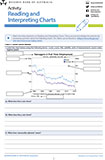
Provides questions and activities linked to the Reading and Interpreting Charts video.
Opening the Vault
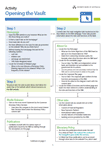
Guides students through how to find the information they need on the RBA website.
Unpacking Publications
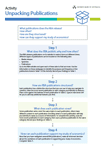
Helps students familiarise themselves with RBA publications and provides some tips to make the most of the information provided.
Key Economic Indicators – Unpacking the Snapshot
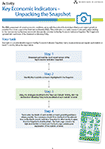
Helps students to apply skills to summarise and explain key economic statistics and trends.
The Transmission Mechanism

Helps students understand how a change in monetary policy flows through to the rest of the economy.
Exploring Inflation
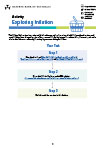
Work through this Activity to investigate interesting examples of inflation developments and trends.
You Make the Decision – the Cash Rate

Helps students identify key economic indicators and how recent movements in these indicators could influence the cash rate decision.
Perspectives on RBA decisions
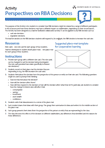
Helps students to consider how decisions made by the RBA might affect different people in the economy.
Building Charts Using RBA Statistical Tables
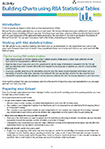
Helps students to gain confidence building Excel charts from data available on the RBA website.
Sectors in the Economy
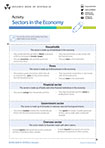
Helps students understand the five sectors of the circular flow model
Complete the Circular Flow Model

Provides an outline of the circular flow model for students to label
Injections and Leakages
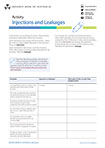
Helps students identify different economic activity as injections or leakages
Business Cycle Case Studies

Help students consider how different people might be affected by the business cycle
Analysing Australia's Economic Performance

Helps students explore economic growth (GDP growth), unemployment rate, inflation and the cash rate
Comparing the Australian and Indian Economies

Helps students compare charts on GDP growth for Australia and India

